-
About
- About Listly
- Community & Support
- Howto
- Chrome Extension
- Bookmarklet
- WordPress Plugin
- Listly Premium
- Privacy
- Terms
- DMCA Copyright
- © 2010-2024 Boomy Labs


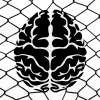 Jodie Taylor
Jodie Taylor
Listly by Jodie Taylor
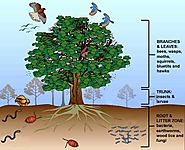
"The term ‘ecology’ is used here because it is one of the most expressive language currently has to indicate the massive and dynamic interrelation of processes and objects, beings and things, patterns and matter….The term ‘media ecology’ is used and in circulation in a number of ways. The term is chosen here because this multiple use turns it into a crossroads: Putting these two words next to each other produces a conjunction of two variables that are always busy with meaning. Their dynamism, however, always arises out of concrete conditions. The virtuality of such conditions, their possible reinvention or alternative state, their pregnancy with change and interrelation, is as deeply implied in this concreteness as much as it can be said to be subject to definition (Fuller 2005:2-3)"

The variable media paradigm pairs creators with museum and media consultants to imagine potential futures for works in ephemeral formats, including digital media, performances, and installations. The initiative aims to define each of these case studies in terms of medium-independent behaviors and to identify the best strategies for preserving work with the help of an interactive questionnaire.
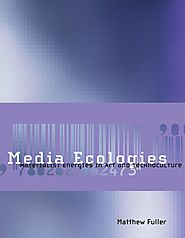
In Media Ecologies, Matthew Fuller asks what happens when media systems interact. Complex objects such as media systems—understood here as processes, or elements in a composition as much as "things"—have become informational as much as physical, but without losing any of their fundamental materiality. Fuller looks at this multiplicitous materiality—how it can be sensed, made use of, and how it makes other possibilities tangible. He investigates the ways the different qualities in media systems can be said to mix and interrelate, and, as he writes, "to produce patterns, dangers, and potentials."
Fuller draws on texts by Felix Guattari and Gilles Deleuze as well as writings by Friedrich Nietzsche, Marshall McLuhan, Donna Haraway, Friedrich Kittler, and others, to define and extend the idea of "media ecology." Arguing that the only way to find out about what happens when media systems interact is to carry out such interactions, Fuller traces a series of media ecologies—"taking every path in a labyrinth simultaneously," as he describes one chapter. He looks at contemporary London-based pirate radio and its interweaving of high- and low-tech media systems; the "medial will to power" illustrated by "the camera that ate itself"; how, as seen in a range of compelling interpretations of new media works, the capacities and behaviors of media objects are affected when they are in "abnormal" relationships with other objects; and each step in a sequence of Web pages, Cctv—world wide watch, that encourages viewers to report crimes seen via webcams.
Contributing to debates around standardization, cultural evolution, cybernetic culture, and surveillance, and inventing a politically challenging aesthetic that links them, Media Ecologies, with its various narrative speeds, scales, frames of references, and voices, does not offer the academically traditional unifying framework; rather, Fuller says, it proposes to capture "an explosion of activity and ideas to which it hopes to add an echo."

This article focuses on the transpositions of media and nature through recent art projects such as Harwood, Wright and Yokokoji’s Eco Media (Cross Talk) and Garnet Hertz’s Dead Media lab. The Eco Media project developed new modes of thinking media (ecology) through a tracking of the intensities of nature. However, in this case the medium is understood in a very broad sense to cover the ecosystem as a communication network of atmospheric flows, tides, reproductive hormones, scent markers, migrations or geological distributions.
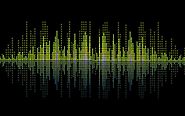
In the last decade, cell phone’s transformation from a tool for mobile telephony into a multi-modal, computational “smart” media device has engendered a new kind of emplacement, and the ubiquity of technological mediation into the everyday settings of urban life. With it, a new kind of media literacy has become necessary for participation in the networked social publics (Ito; Jenkins et al.). Increasingly, the way we experience our physical environments, make sense of immediate events, and form impressions is through the lens of the camera and through the ear of the microphone, framed by the mediating possibilities of smartphones. Adopting these practices as a kind of new media “grammar” (Burn 29)—a multi-modal language for public and interpersonal communication—offers new perspectives for thinking about the way in which mobile computing technologies allow us to explore our environments and produce new types of cultural knowledge.
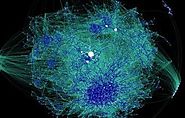
Excerpted from: Andrey Miroshnichenko. “Media Ecology as Ecology Contrariwise: Protecting Humans from the Digital Environment”. Systema: connecting matter, life, culture and technology. Vol 3, No 1 (2015): Special Issue: Media Ecology. Guest Editor Robert Logan
The article applies the concepts of media socialization, media literacy, and media hygiene to the problem of human adaptation to the digital environment. The interaction of humans with the digital environment is described from the viewpoint of media ecology, but the ecological paradigm is reversed: what is at issue is not the protection of the environment from humans, but rather the protection of humans from the digital environment.
The development of the digital environment is only a few decades old. Humans have no experience of living amid environmental confusion and temporal compression. The task of media ecology is to help humankind develop the skills of living in a digital environment.
Media socialization develops norms for the children who enter the digital world with little experience of social interaction in the real world. Media literacy is a method of teaching people to use technical and social interfaces for interaction within a new environment. Media hygiene guides people to “prosume” content in the digital environment safely.

From stone-axes to mobile phones, throughout history people have given birth to a wide range of technologies that extend our given physical and mental capabilities. Today, it is almost impossible to imagine a world without technology. Every human being on the planet employs technology of some sort, and every human has to cope with technological change at various points during his or her lifetime. Yet, despite our deep-rooted relationship with technology, and the fact that we are wholly surrounded by it, most of us are still relatively unaware of how new technologies are introduced, accepted or discarded within our society.
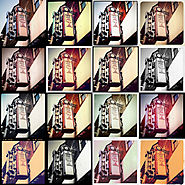
As digital media have become more pervasive and entrenched in our daily routines, a nostalgic countertrend has increasingly valued the physical and tactile nature of the analogue image. In the past few years, technologically obsolete devices, such as lo-fi cameras and vinyl records, have not faded out of sight completely but are instead experiencing a comeback. At the same time, digital media capitalise on the nostalgia for the analogue and fetishise the retro aesthetics of old technologies. This article explores the emergence of photo filter and effect applications which allow users to modify digital photos, adding signifiers of age such as washed-out colours, scratches and torn borders. It is argued that these new technologies, with programs such as Instagram, Hipstamatic and Camera 360, bring back the illusory physicality of picture-taking through digital skeuomorphism.
Drawing on media archaeology practice, this article interrogates the limits of the retro sensibility and the fetishisation of the past in the context of digital media, in particular by focusing on the case study of the start-up Instagram. This photo filter application neither merely stresses the twilight nature of photography nor represents the straightforward digital evolution of previous analogue features. Rather, it responds to the necessity to feel connected to the past by clear and valued signs of age, mimicking a perceived sense of loss. Faced with the persistent hipster culture and the newness of digital media, photo filter apps create comfortable memories, ageing pictures and adding personal value. As such, it will be argued that this phenomenon of nostalgia for analogue photography can be linked to the concepts of ritual and totem. By providing a critical history of Instagram as a photo-sharing social network, this article aims to explain new directions in the rapidly changing system of connective media.

This article discusses a possible future, in which the network society is deepening to become an internet-based ecosystemic society. The study of the possible societal impacts of the ‘media disruption’ brought along by the internet has been somewhat neglected. The article thus examines the social consequences of the ‘media disruption’ from the perspective of the media ecology tradition, which takes media into account as ‘living environments’. The article connects the media ecology tradition to the concept of the ecosystem, which has been primarily used in business economics discussions. In an ecosystemic economy, companies work in closer collaboration and share information more freely. One of the most central themes of the media ecology tradition is how different areas of society, such as private and public, work and leisure time and various institutions and organisations, begin to interlock as a consequence of the spread of electronic and digital media. The main argument of the article is that as the internet further penetrates all spheres of society, the metaphor of the ecosystem could serve as a metaphor for the entire society, not only for the economy. In this way it anticipates a possible future for the whole of society through changes in media. The article is part of the MEDEIA project (New roles and functions of media in the digital meanings society 2030) conducted at the Finland Futures Research Centre (FFRC), University of Turku.

This issue is an exercise in media ecology that is paradoxically unnatural. Instead of assuming a natural connection to the established tradition of Media Ecology in the Toronto-school fashion of Marshall McLuhan, Neil Postman, and the work of scholars involved in the Media Ecology Association (http://www.media-ecology.org/media_ecology/), our issue stems from another direction; its theoretical orientation is more inspired by the work of Felix Guattari and engages with several overlapping ecologies that are aesthetico-political in their nature. It stems from a more politically oriented way of understanding the various scales and layers through which media are articulated together with politics, capitalism and nature, in which processes of media and technology cannot be detached from subjectivation. In this context, media ecology is itself a vibrant sphere of dynamics and turbulences including on its technical level. Technology is not only a passive surface for the inscription of meanings and signification, but a material assemblage that partakes in machinic ecologies. And, instead of assuming that ‘ecologies’ are by their nature natural (even if naturalizing perhaps in terms of their impact on capacities of sensation and thought) we assume them as radically contingent and dynamic, in other words as prone to change.

Media ecology presents an emergent, non-representational approach towards the study of media systems. This article seeks to extend the theoretical underpinnings of media ecology by introducing the concept of scale – or more precisely scalar entanglement – as a way by which media ecology can usefully engage with a range of ethical and political issues.
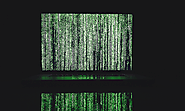
All around us, it seems that a nebulous series of entities called ‘platforms’ are increasingly shaping our world. Facebook is blamed for perpetuating fake news and changing the American election …

Plagiarism and the Internet: Technology is commonly blamed for encouraging cheating among students. Is it really so?
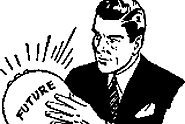
With big data and algorithms you could extend your 'virtual self' beyond the grave. And could meeting your future self help change your current behaviour?
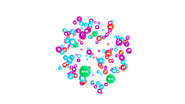
Have you ever wondered what a friend would do if she was in your decision-making situation? Or thought about where a family member might go if he was visiting a travel destination with you? In many cases, you can only guess what a person would do if they were in your shoes. But now you may be able to securely "borrow their identity" and ask a question with the confidence of receiving a relevant and valuable answer.
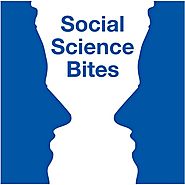
“Most people,” says Goldsmiths sociologist Bev Skeggs, “think they’re using Facebook to communicate with friends. Basically they’re using it to reveal how much they can be sold for, now and in the future, and how much their friends can be sold for.”
That was an almost accidental lesson she learned during research on how social networks were structuring, or restructuring, friendships, she explains to interviewer David Edmonds in this Social Science Bites podcast. After receiving a monstrous data dump – with permission – of individual’s social media usage, Skeggs and her colleagues were “completely diverted” as it dawned on them that Facebook was trawling its users’ habits to collect information on people’s general browsing habits.
The potentially disturbing but legal practice was only the first step in Facebook’s efforts to monetize social media – and in what Skeggs argues calcifies inequality.
“They probably have the greatest capacity to experiment with social data to see who we’re communicating with, how we’re communicating with them,” Skeggs says, “but basically 90 percent of Facebook profit is made from advertising -- selling your data to advertising companies so that they can place an advert on your browser.” And in turn, algorithmically segregating web denizens – well, their composite data profiles, at any rate -- based on their perceived wealth and influence. This “subprime silo-ing” pushes sketchy advertising, in particular for high-interest loans, at people who can least afford to take on more debt.
That, she explains, is why “we really, really need to have some strict regulation” when it comes to the trading of personal data, targeting, advertising and similar practices that flow from social media.
Skeggs, who has led the sociology departments at Manchester University and Goldsmiths, University of London, has long looked at less explored vectors of inequality, as demonstrated by her breakthrough 1997 book, Formations of Class & Gender: Becoming Respectable. She was the joint managing editor of the The Sociological Review for five years starting in 2011, a period that saw the esteemed journal transition into an independent foundation “dedicated to the advancement and study of sociology in everyday life.” (She remains an editor at large for the Review.)
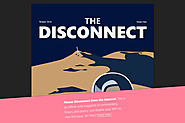
Whether you use it trivially, professionally, or personally, the internet has become a staple of modern society. So much so that, on occasion, we find ourselves feeling overwhelmed and in need of a mental break — a break many of us are reluctant to take (read: FOMO). We have become so heavily reliant on the internet that the idea of being completely cut off from it is as daunting as getting lost in the woods without a compass or a map. This catch-22 — the fact that we need disconnection, but are reluctant to implement it — makes the idea a curious thing in the digital age. For this reason, we need offline advocacy now more than ever. Let’s look to the makers and creators of the internet for more humane technology design that embraces the positive aspects of the internet, while negating its nefarious features.
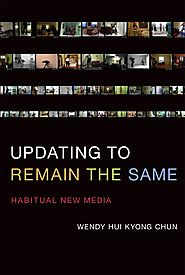
Wendy Hui Kyong Chun, who has studied both systems design and English literature, is Professor of Modern Culture and Media at Brown University. She is the author of Control and Freedom: Power and Paranoia in the Age of Fiber Optics and Programmed Visions: Software and Memory, both published by the MIT Press.

A Canadian philosopher, professor and author, McLuhan was an astute media theorist with a prescient vision of how technology would continue to shape our world.

Companies and CEO’s have long faced the dilemma of balancing short and long-term performance pressures with responsibility and contributing to a sustainable ecosystem. How can they now face these challenges in an era unprecedented technological advancement?
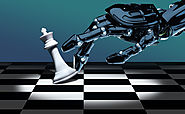
A self-driving car has a split second to decide whether to turn into oncoming traffic or hit a child who has lost control of her bicycle. An autonomous drone needs to decide whether to risk the lives of busload of civilians or lose a long-sought terrorist. How does a machine make an ethical decision? Can it “learn” to choose in situations that would strain human decision making? Can morality be programmed? We will tackle these questions and more as the leading AI experts, roboticists, neuroscientists, and legal experts debate the ethics and morality of thinking machines.

Universities are now trying to catch up with the current fast development of Machine Learning. Future professionals on the field need to understand the potential consequences of the changes upon us…
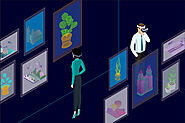
Art galleries and museums around the world find new and unexpected ways to connect audiences with art, thanks to the latest technological advances, digital initiatives, and social media platforms.

In recent years ‘synthetic media’ has emerged as a catch-all term used to describe video, image, text and voice that has been fully or partially generated by computers. The ability for AI-driven systems to generate audiovisual content is, in our minds, one of the most exciting developments enabled by recent progress in deep learning. We are about to see a major paradigm shift in media creation and consumption that will likely change the equation for entire industries.